After the fall of Muammar Gaddafi, Libya has descended into chaos as players vie for control amid a devastated country and a critical mass of refugees.
On June 19th, the International Organization for Migration and the United Nations Refugee Agency reported that at least 126 refugees fleeing the turbulent and divided nation of Libya were feared to have drowned in a single incident a few days earlier. The boat belonging to the refugees sank after it was intercepted by Libyan traffickers, who stole the boat’s motor – leaving the vessel uncontrollable, and taking on water.
A few days later, on June 20th, Italian and Spanish coast guards intercepted a small fleet of inflatable dinghies in international waters off the Libyan coast, rescuing 526 people. The refugees, a group which included eight pregnant women and nine children, were hoping to reach an Italian port before weather turned against them and put them in dire straits.
In the past several weeks, a series of coast guard operations have rescued thousands of refugees who had set out from Libya.
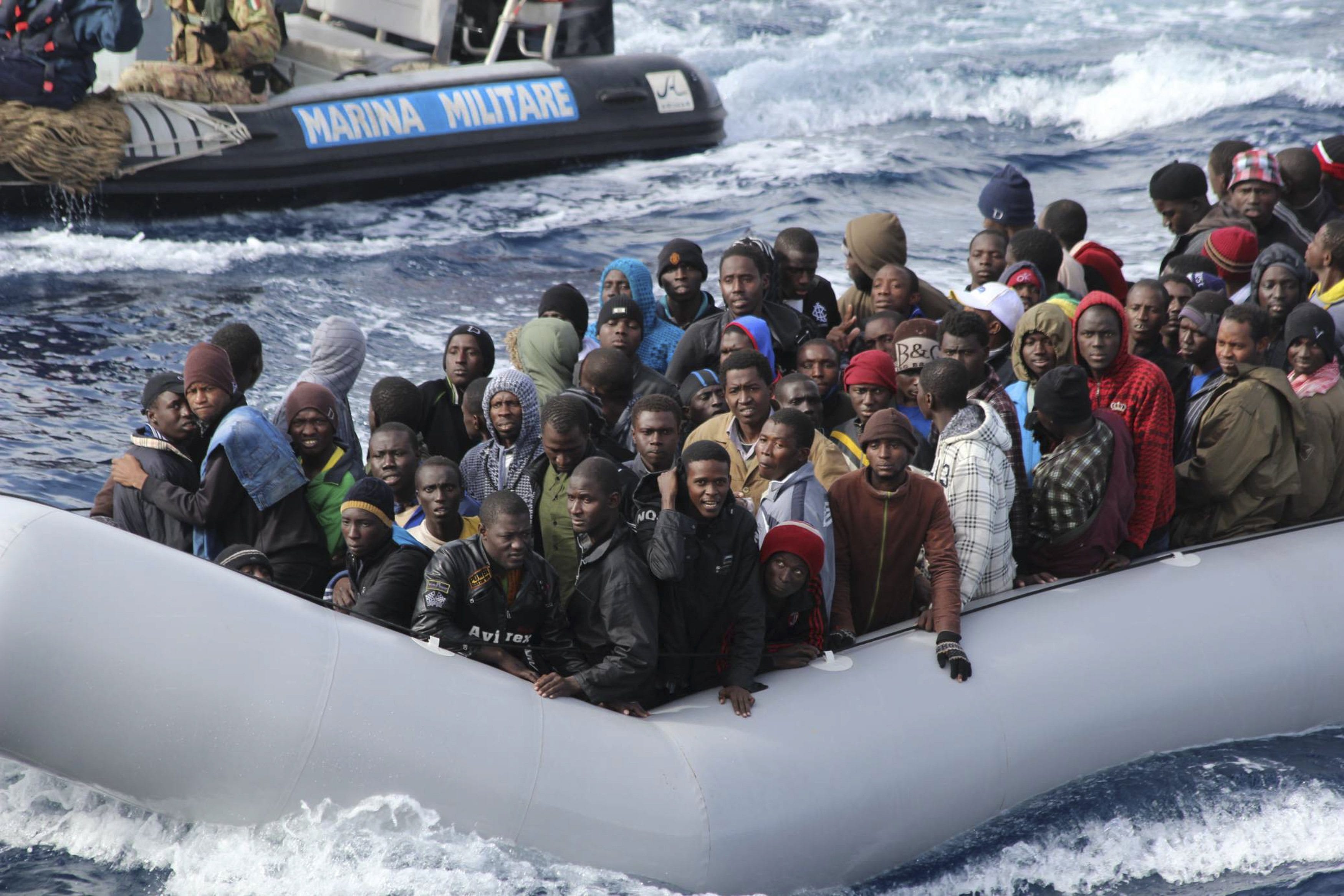
Those fleeing often use improvised rafts while trying to cross the dangerous waters of the Mediterranean Sea, facing what has now reportedly reached a death rate of 1 in 40.
In response to the crisis, on July 4th the European Union announced in a statement, “With the situation becoming ever more pressing along the Central Mediterranean Route, the Commission is today setting out a series of immediate measures that can be taken by the EU Member States, the Commission and EU Agencies, and Italy itself.” Among the measures to be taken, which include a €46 million project to “enhance the authority of the Libyan authorities,” the EU is supporting the establishment of a fully operational Maritime Rescue and Coordination Centre in Libya, to support and train the Libyan Coast Guard. The hope is that a trained and professional force will be able to save thousands of lives a year as refugees set out to sea on crowded and unsafe boats.
Facing what has been called the European migrant crisis, where, according to the International Organization for Migration estimates, more than 1,011,700 migrants arrived by sea in 2015, and almost 34,900 by land, the EU’s actions are not strictly humanitarian. Almost 77,000 migrants have landed in Italy alone since January, a 15 percent increase from the same period in 2016.
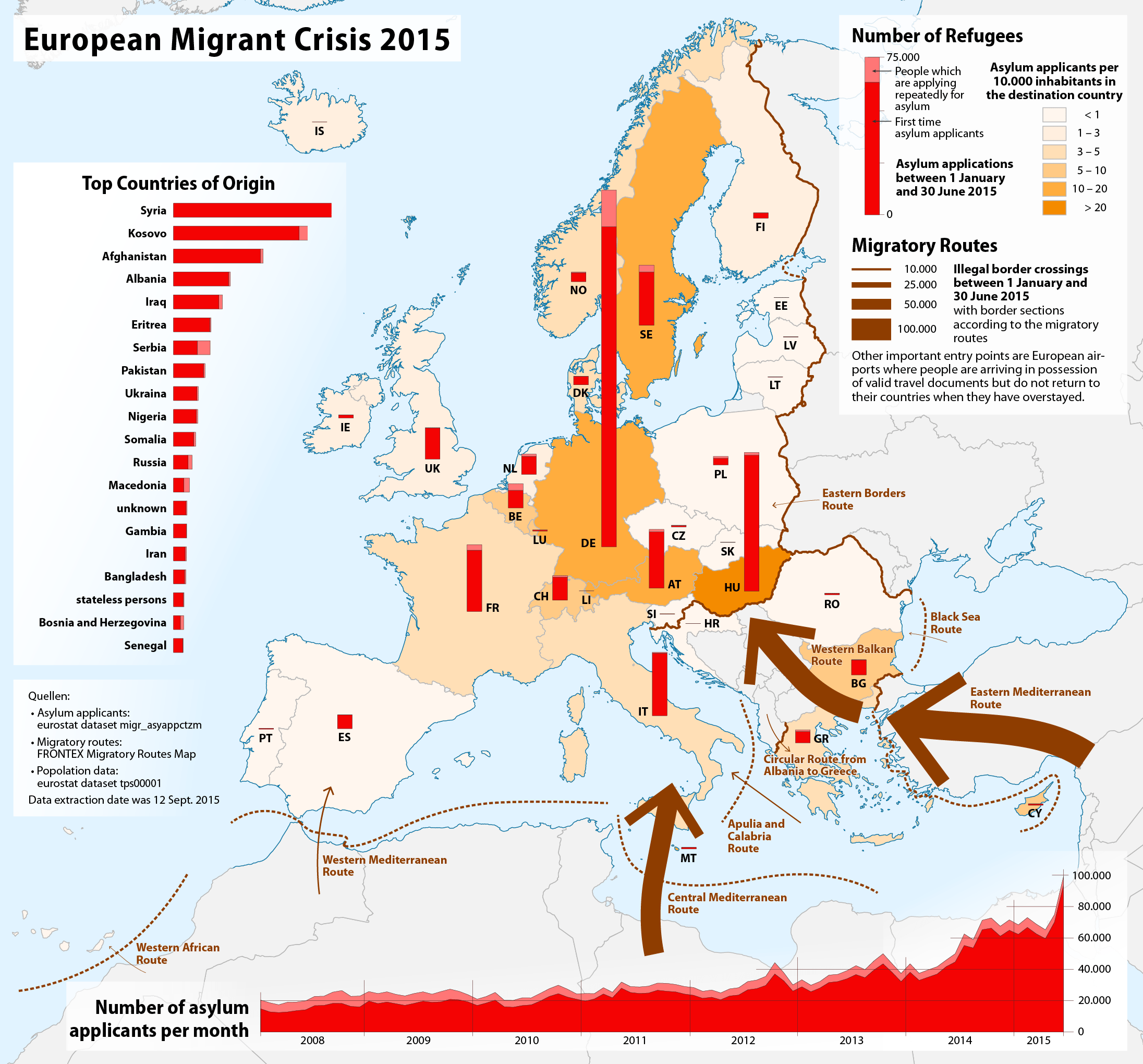
But what are they trying to escape?
What happened to Libya after the fall of Gaddafi?
In the fall of October 2011 the forces of the National Transition Council (NTC), with assistance from NATO air power, captured the last bastion of Muammar Gaddafi loyalists in the coastal town of Sirte. Forces loyal to the new government captured Gaddafi and brutally murdered him, casting off decades of authoritarian rule and beginning a new age of a free and democratic Libya.
At least that was the plan.
Ten months later Libya held its first free elections, choosing representatives for the new General National Congress (GNC), and watched as the NTC handed over power. It was the first peaceful transition of power in Libya’s modern history.
That is where the positive evolution of Libyan governance would end.
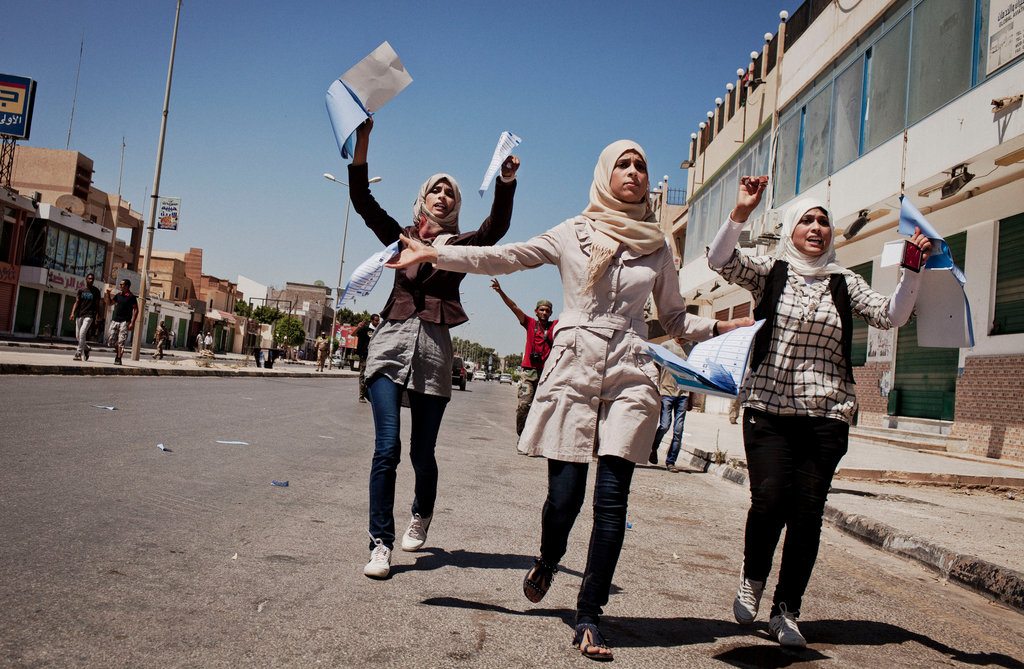
The GNC accomplished very little and devolved into bickering between the two major groups that made up the Congress: The National Forces Alliance and the Justice and Construction Party.
Due to the GNC’s constant infighting and failure to set up a functioning internal security apparatus, armed groups that had been formed during the revolution flourished under their watch. During this time, kidnappings and assassinations were commonplace. An attack by Ansar Al-Sharia in Benghazi would kill US Ambassador, Chris Stevens, along with U.S. Foreign Service officer Sean Smith and CIA contractors Tyrone Woods and Glen Doherty.
The one thing the GNC managed to agree on at one point was the Political Isolation Law. The law stated that anyone with ties to the old Gaddafi regime would be banned from holding public office. The measure was incredibly popular amongst the Libyan population and with the Islamist members of the Congress, as they had very little to do with the old regime. Others had reservations as it would adversely affect expatriates and leaders of the more liberal parties. The reservations were quickly sidelined when an armed group stormed Congress to force the law into passing. The law passed with no member opposing it.
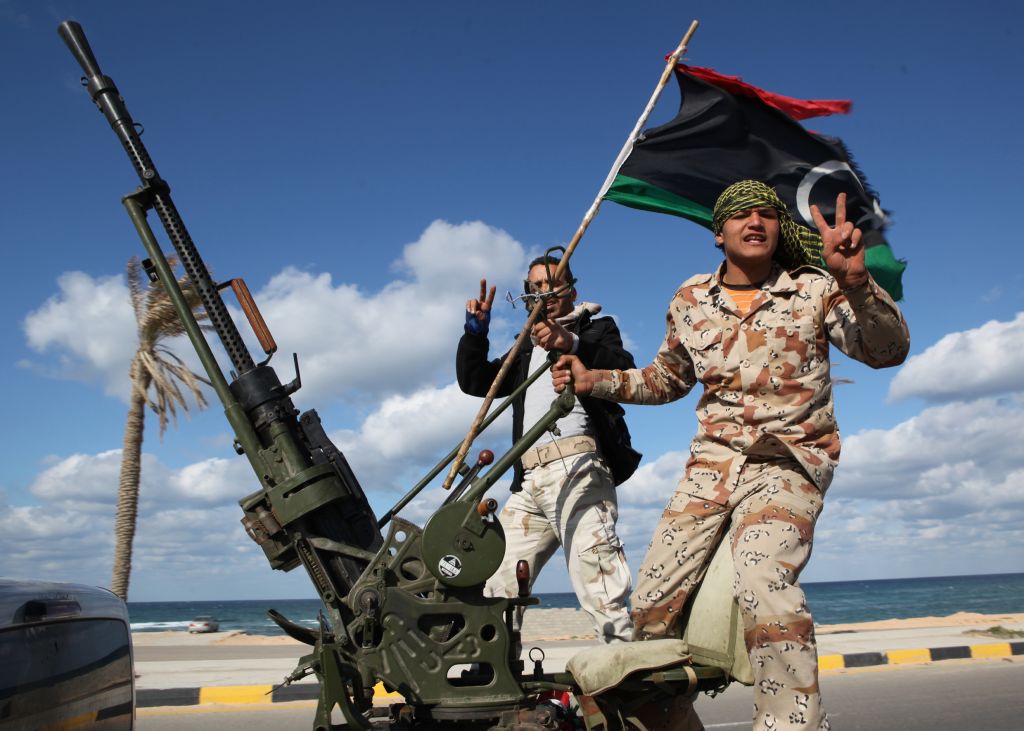
The GNC elected Nouri Abusahmain as its President in June 2013. Though he was considered by the secular liberal members of Congress as a compromise, he still had many strong Islamist ties. Faced with a terrible security situation in Tripoli, during which time the GNC itself had been stormed by armed groups and protestors, Abusahmain formed the Libya Revolutionaries Operations Room (LROR) which was intended to serve as a special protection force for Tripoli. In December 2013 Abusahmain and the GNC began to enforce Sharia Law and in 2014 gender segregation and compulsory wearing of the hijab were imposed.
On 23 December 2013 the GNC voted with opposition to extend its mandate with an election. This immediately caused unrest and protest around the country, as the GNC was seen as already failing to stop the country’s slide into chaos and lawlessness.
In February 2014 General Khalifa Haftar, A Gaddafi-era Officer who assisted in the deposed Colonel’s coup, appeared on Libyan television and declared the GNC was to be disbanded and a caretaker government put in its place. The GNC dismissed this as a coup attempt as Haftar met with ex officers of the former Libyan military gaining support. Three months later Haftar launched what he called Operation Dignity against the Islamic militias of Benghazi and the various Islamist forces of the GNC.
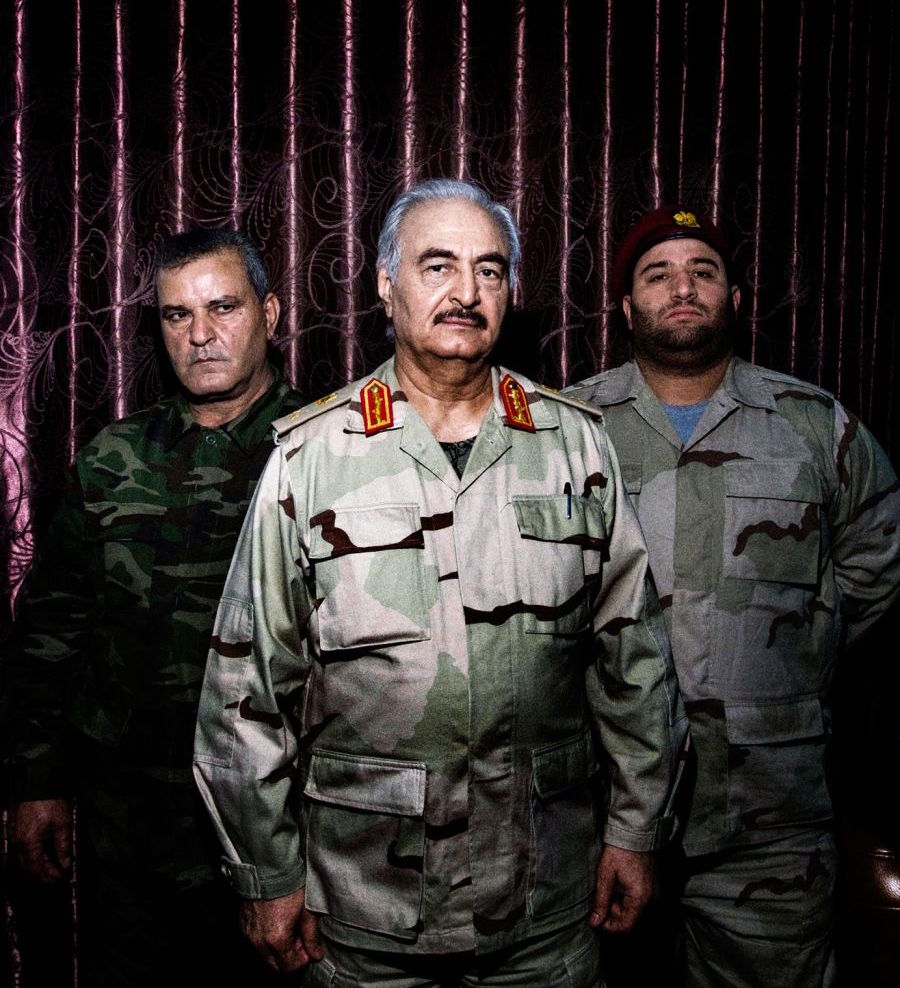
Only four days after beginning the operation the GNC announced they would be holding elections on June 25th, and the winners of the election would be formed into the new House of Representatives. The Islamists were soundly defeated in the election. With reported turnout of only 18%, the Islamists declared the election null and accused the HoR of being made up of Gaddafi supporters.
Islamists launched ‘Operation Libya Dawn’ in Tripoli, causing the HoR to flee the capital, relocating to Tobruk. The HoR allied themselves with Haftar’s forces and nominated him Army Chief. The Supreme Court in Tripoli ordered the HoR dissolved, and that the new Islamist controlled GNC was the legitimate government.
That started what is now known as The Second Libyan Civil War. Its power bases became so fractured that there was no true “national power” or someone who had influence over the entire nation. Instead the various forces of the GNC and HoR created city-states, with various militia and government authorities only going so far as to the end of the street.
In 2014, in the middle of the nationwide breakdown of what little post-revolution cohesion there was, a militia known as the Battar Brigades returned from fighting in Syria to the Libyan city of Derna. There, they linked up with the Derna branch of Ansar Al-Sharia and various other non Al-Qaeda allied Islamist groups in the region. Shortly afterwards they declared their allegiance to The Islamic State and held a massive military parade through the middle of the city.
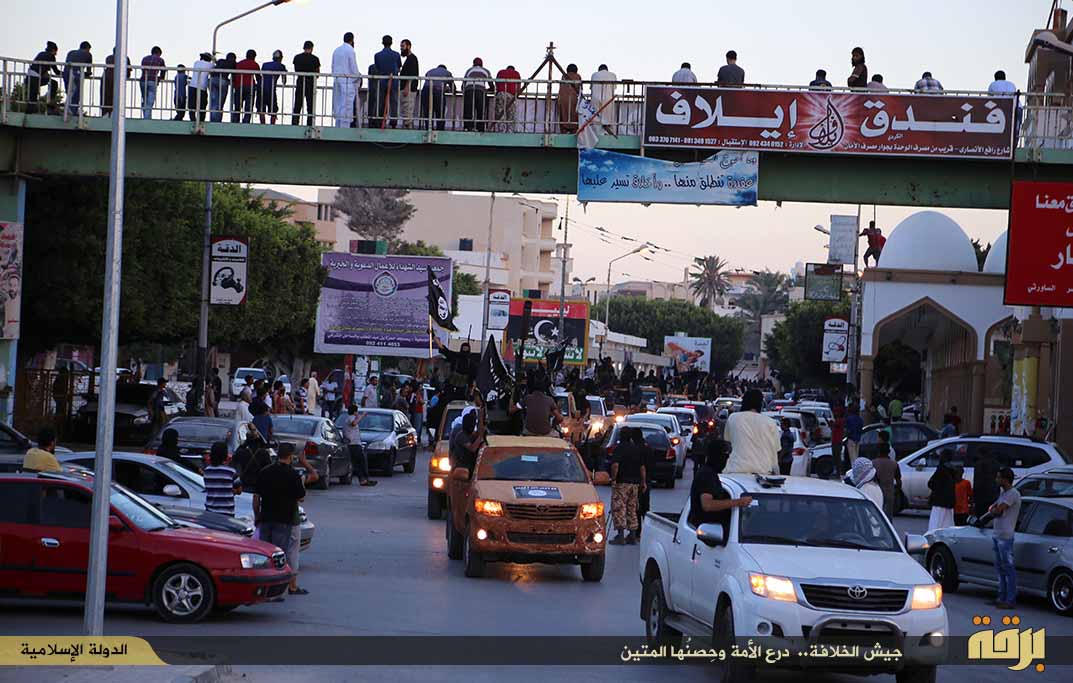
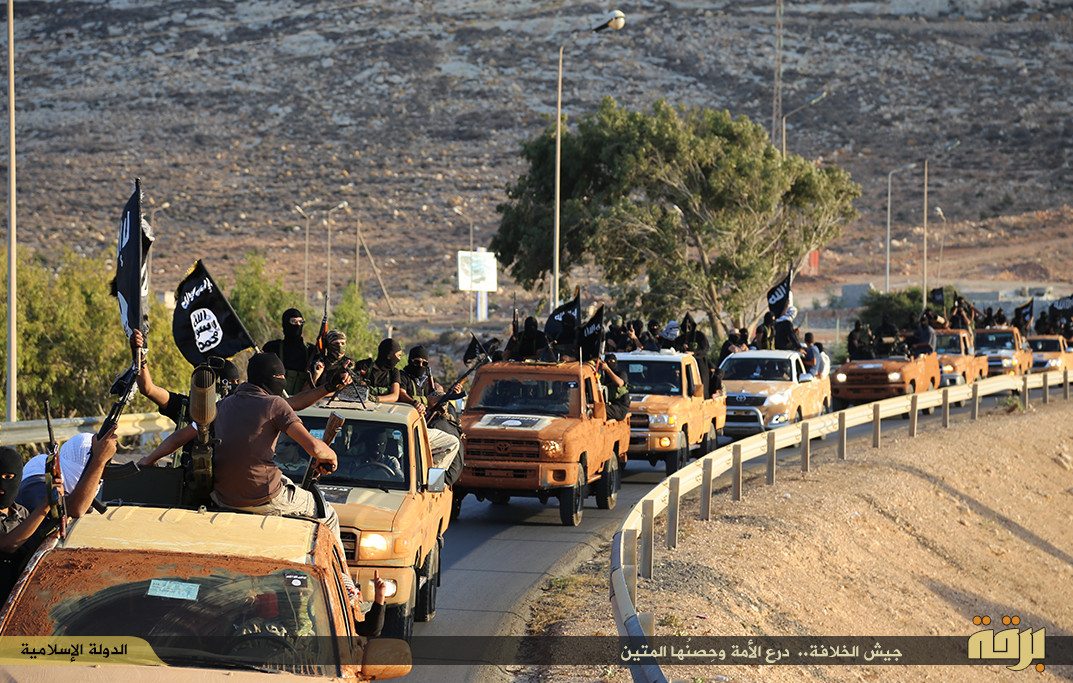
In 2015, the UN Envoy to Libya, Bernidino Leon, proposed a power sharing agreement between the HoR and the GNC led by a neutral Prime Minister, Fayez Al-Sarraj. Both sides rejected the proposal outright, though the idea sparked talks between the two sides going forward. In December 2015 the GNC and the HoR signed what is known as the Libyan Political Agreement, or LPA. This landmark document would create a nine-member Presidential Council and seventeen-member Government of National Accord (GNA), with the HoR to stay as the recognized legislative branch of the government. The agreement was for elections to be held within two years.
The Presidential Council was to act as the office of the Head of State, with Al-Sarraj as Chairman. It was to take command of the LNA. The agreement was submitted to the UN Security Council, which recognized the GNA as the sole legitimate government of Libya. Unfortunately, the agreement spiraled out of control just as fast as it was signed.
Both parties had various militias that strongly disagreed with the LPA. General Khalifa Haftar of the LNA was the strongest among them. A combination of Haftar’s influence and the GNA’s comparatively weak military backing, led the HoR to vote against approving the GNA as it stood, and later withdrew its recognition of the GNA completely.
To further underscore the GNA’s weakness, in October 2016 Khalifa Al-Ghawil, a former GNC Prime Minister, declared his Government of National Salvation, or GNS, as the real authority in Tripoli. Loyal Al-Ghawil militias failed at staging a successful coup, but did manage to get a foothold in Tripoli, becoming the third self proclaimed government of the nation.
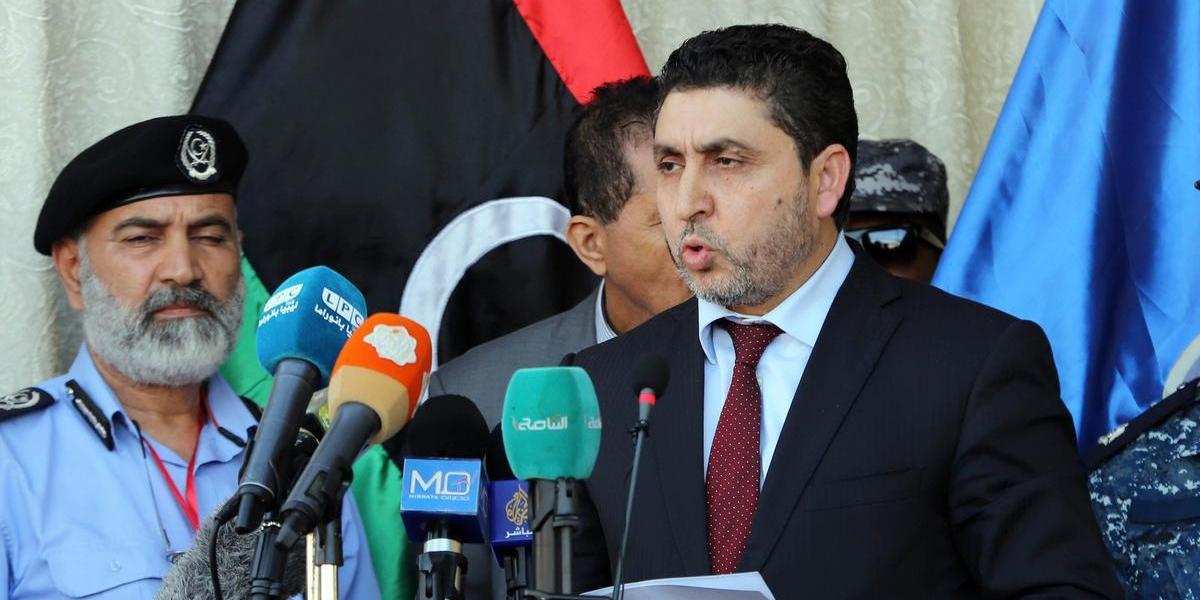
Libya’s major players
Libyan National Army (LNA) – Led by the now Field Marshal Haftar, the LNA is supposed to be the legitimate Army of the operating government of Libya, but serves only the HoR. Said to have around 35,000 men, Special Forces, tanks, and artillery the LNA is the most professional force on the ground. Haftar framed Operation Dignity, which was once thought of as nothing more than just another coup attempt, into an offensive against the Jihadists in the Libyan Dawn movement, inviting international powers such as the US and Egypt to support him. The LNA’s operations, combined with the signing of the LPA, effectively destroyed the Libya Dawn movement. His offensive checked the Islamist groups from growing in the east and has come very close to securing Benghazi itself, with only a few isolated suburbs out of his control. The LNA entered into international training agreements with the UK government, but after reports of rampant disorder and sexual assaults by Libyan soldiers it was cancelled.
The Benghazi Brigade – Exiled fighters pushed out of their home by Haftar’s Operation Dignity. Their main goal is to recapture their home City of Benghazi, which has led to nearly unending combat between them and the LNA. In 2016 they managed to capture two oil ports, but quickly lost them to the LNA.
Al-Bunyan Al-Marsous (BAM) – Populated by mostly Misratan fighters, they drove ISIL from Sirte after suffering hundreds of dead and wounded. The GNA, unable to secure the capital, asked BAM to move towards the capital to fight as peacekeepers, which they agreed to do. BAM has not said if they support the GNA politically.
Pro-GNA Forces – The most powerful supporter of the GNA is Abdel Rauf Kara, the leader of the so-called Special Deterrent Force. Kara’s Salafist forces once attempted to be a kind of special police for Tripoli, they reinvented themselves by hunting down ISIS cells within the city.
Islamic State of Iraq and the Levant in Libya (Often referred to as ISIL in Libya, or just ISIL) – After being formed by fighters returning from Syria in 2014, and being led by foreigners, Abu Al-baghdadi declared three new Islamic State Provinces that made up Libya. In each province an ISIL faction was formed. Wilayah Al Fizan, operating in the Fezan Province, Wilayah Al Barqah, operating in the Cyrenaica province, and Wilayah Al Tarabulus, which operates in the greater Tripolitania province. They swept through Derna and Sirte, but before they could replay their rapid advancement they managed to pull off in the Middle East they were checked by other Libyan Militias. Due to the harsh rules and punishment they forced on the populace, locals quickly united against them. In 2015 the Derna Mujahedeen Shura Council formed, and with assistance from Egyptian and US Air power, forced the Islamic State from Derna.

The same thing happened in Sirte when the Islamic State attempted to rule through fear using public execution. A group calling themselves Bunyan Al-Marsous declared war on the Islamic State and, backed by more than 400 US air strikes, routed them by December 2016. While, the Islamic State is on its back foot in Libya, it is not defeated. The Pentagon puts the number of ISIL fighters in Libya at around 6,000.

A downward spiral of chaos
This situation of total government breakdown and failure, from all three governments, has led to the mass exodus of over one million people, along with nearly 60,000 internally displaced people from Benghazi alone according to the United Nations Commission on Refugees.
Even though Libya is trapped in a downward spiral of chaos, it has become the main hub for African migrants attempting to flee the continent. Running from the long simmering wars in the south, indefinite military conscription in the east, or crippling poverty in the west, they see Libya’s breakdown of law and order, along with its close proximity to the Mediterranean, as their best chance at a better life. Unfortunately this has led to thousands of deaths at sea. According to IOM, some refugees are even being tricked by their smugglers and sold into slavery.
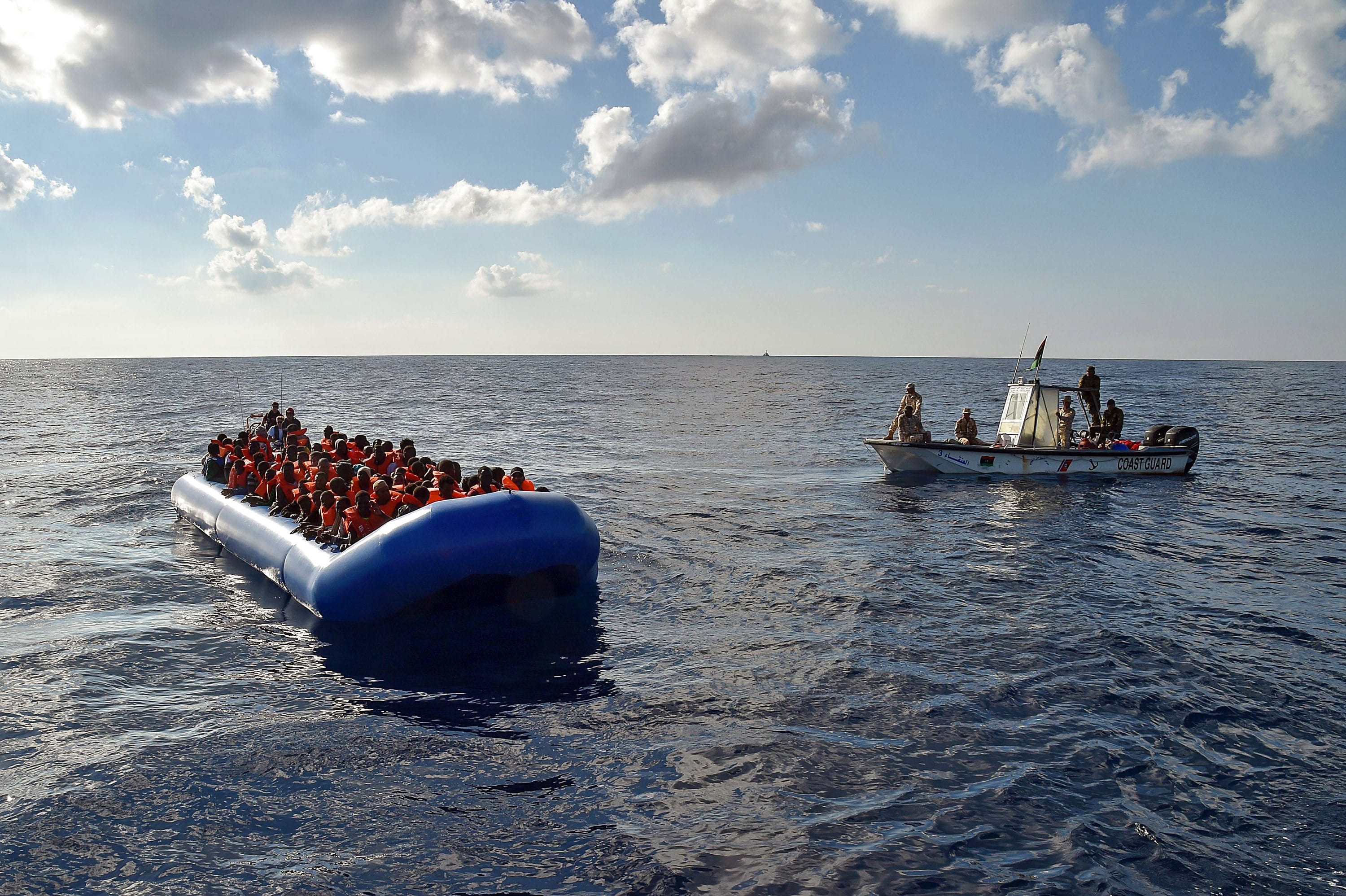
The EU has placed its hopes on the shoulder of the one semi-functioning arm of the GNA, the Coast Guard. Italy, having been hit with the largest number of refugees, has taken the lead in the effort, repairing boats and training nearly 90 crews so far.
Unfortunately, the Coast Guard is not without controversies. Humanitarian groups have accused them of shooting at refugee boats, leaving some people stranded, and robbing others. This has led to several groups in the UK and EU to call on their government to stop funding them. The charges have been roundly dismissed by the GNA and the Libyan Navy.
Joe Kassabian, Lima Charlie News
[Edited by John Sjoholm, May Hamza, Anthony A. LoPresti]
[Main Image: Libyan General Khalifa Haftar (Gabriele Micalizzi / Cesura)]
Joe Kassabian is a Veteran of the US Army, serving for seven years as a 19K and is a published Author. He has worked extensively in the Middle East, Europe, and South Asia training and advising national security forces. He studied Communications and Journalism in Texas before relocating to the Seattle area. His first book, a memoir of his last year in Afghanistan, The Hooligans of Kandahar, is available now in paperback and ebook. Follow Joe on Twitter @jkass99
Lima Charlie World provides global news, featuring insight & analysis by military veterans, intelligence professionals and foreign policy experts Worldwide.
For up-to-date news, please follow us on twitter at @LimaCharlieNews
In case you missed it:

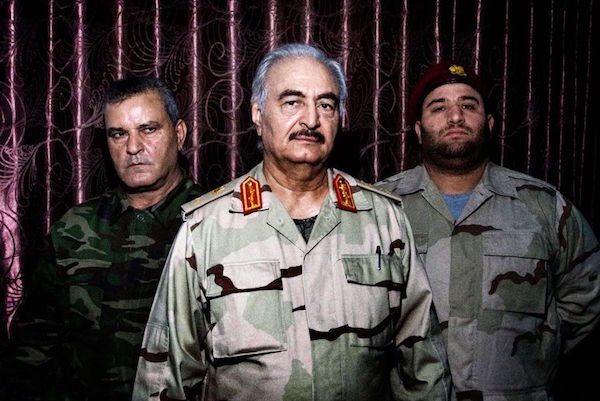
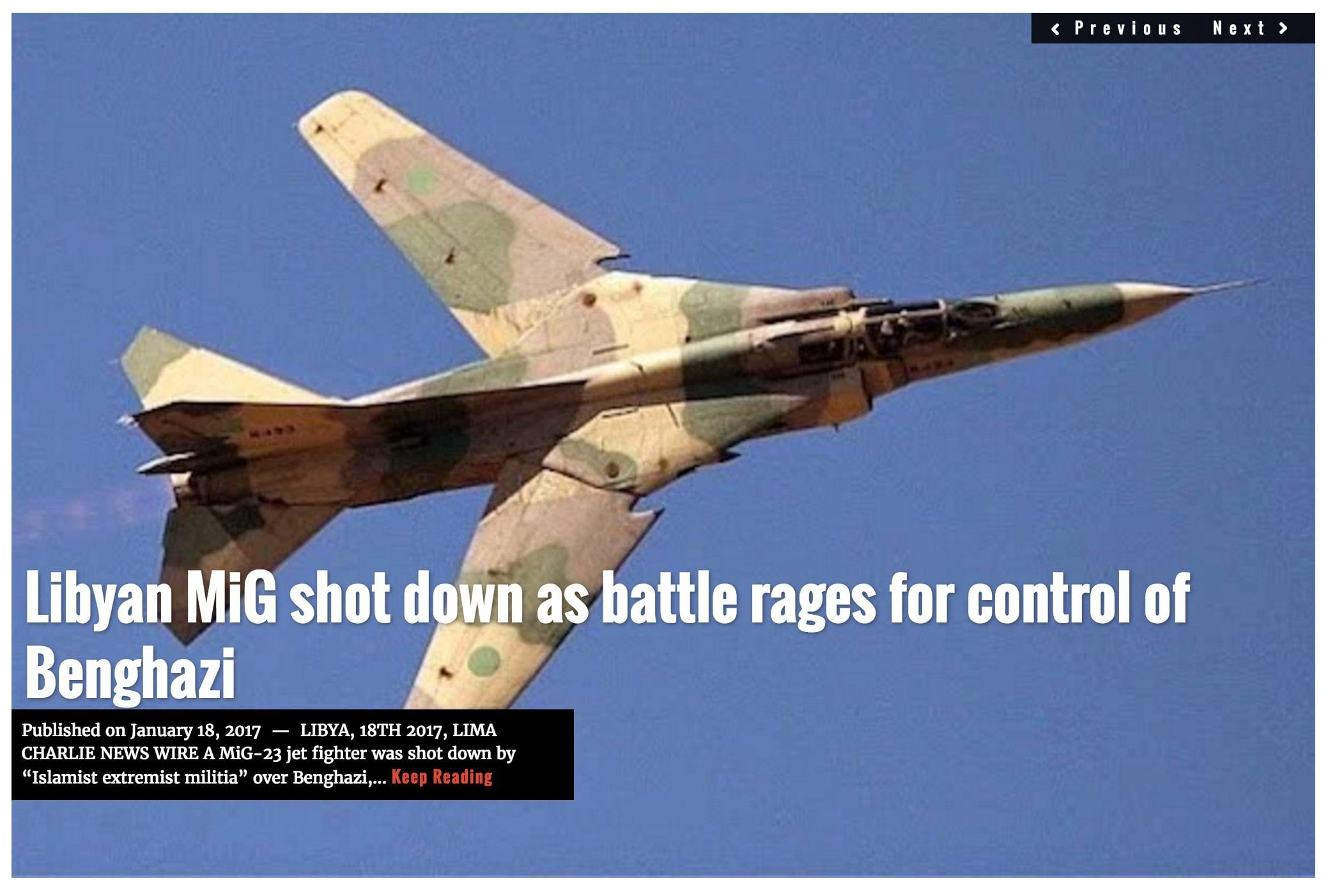
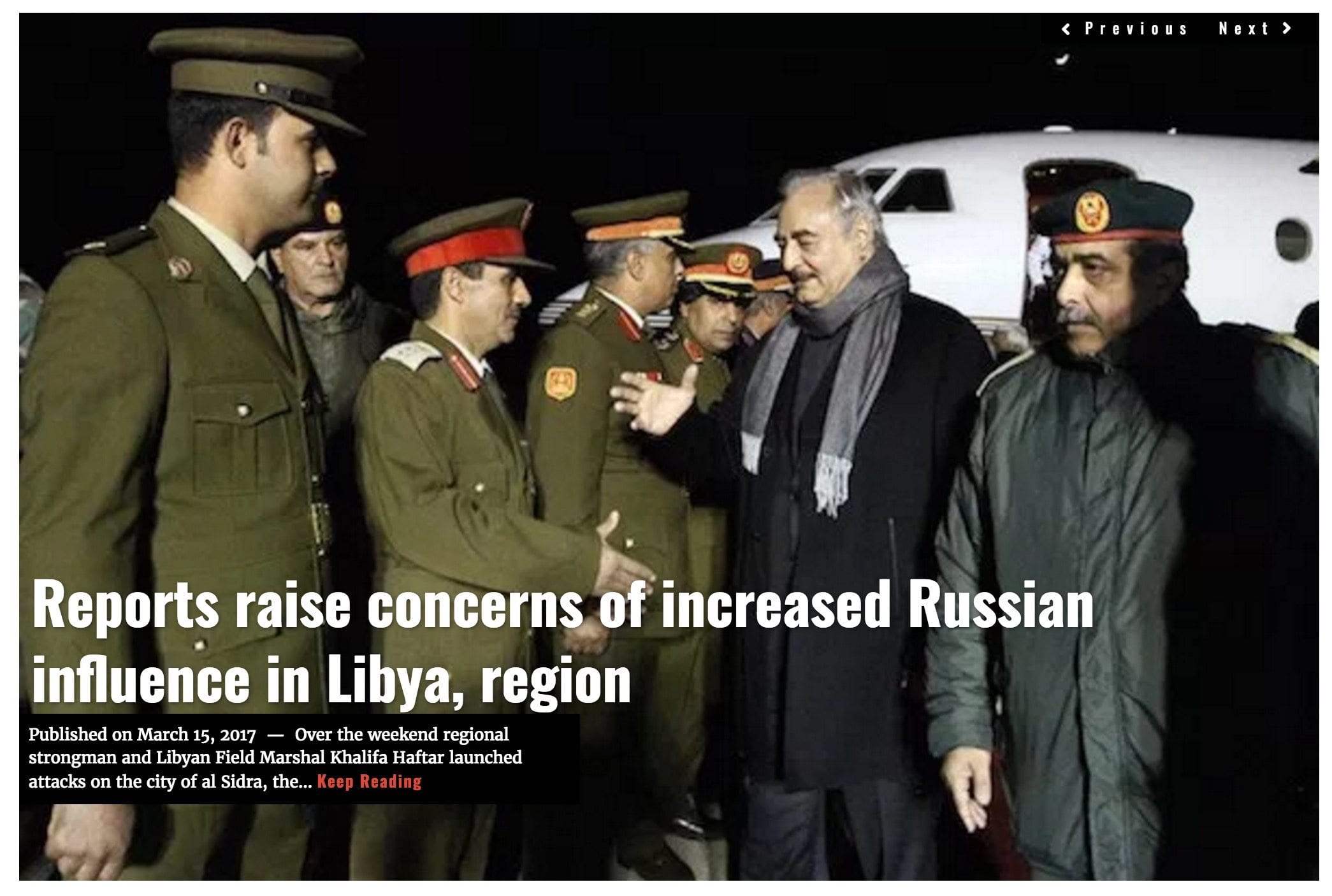
![Image The Philippines, U.S., China make for a tough week at the International Criminal Court [Lima Charlie News]](https://limacharlienews.com/wp-content/uploads/2019/03/ICC-bad-week-480x384.png)
![Image Ambitions Never Laid to Rest - An Open Society vs. The Terrorist [Lima Charlie News] (Image: Patrick Hertzog)](https://limacharlienews.com/wp-content/uploads/2018/12/Screen-Shot-2018-12-28-at-2.37.54-PM-480x384.png)
![Image Islamic State is pushed back, White Power is on the rise. Sunrise in the morning. News at 11. [Lima Charlie News]](https://limacharlienews.com/wp-content/uploads/2018/12/48aca003f29f77ba082571055dfc631f5830a6cb-480x384.jpg)
![Africa’s Elections | In Malawi, food, land, corruption dominate [Lima Charlie News]](https://limacharlienews.com/wp-content/uploads/2019/06/Malawi-election-Food-land-corruption-480x384.jpg)
![Image The Rwandan Jewel - Peacekeepers, Conflict Minerals and Lots of Foreign Aid [Lima Charlie World]](https://limacharlienews.com/wp-content/uploads/2019/03/Rwanda-Jewel-480x384.jpg)
![Image [Women's Day Warriors - Africa's queens, rebels and freedom fighters][Lima Charlie News]](https://limacharlienews.com/wp-content/uploads/2019/03/Womens-Day-Warriors-Lima-Charlie-News-480x384.jpg)
![Image Zimbabwe’s Election - Is there a path ahead? [Lima Charlie News]](https://limacharlienews.com/wp-content/uploads/2018/09/Zimbabwe’s-Election-Is-there-a-path-ahead-Lima-Charlie-News-480x384.png)
![[Silver lining for China in Zimbabwe’s violent elections][Lima Charlie News]](https://limacharlienews.com/wp-content/uploads/2018/08/Screen-Shot-2018-08-02-at-12.51.35-PM-480x384.png)
![Image The Philippines, U.S., China make for a tough week at the International Criminal Court [Lima Charlie News]](https://limacharlienews.com/wp-content/uploads/2019/03/ICC-bad-week-150x100.png)
![Image Ambitions Never Laid to Rest - An Open Society vs. The Terrorist [Lima Charlie News] (Image: Patrick Hertzog)](https://limacharlienews.com/wp-content/uploads/2018/12/Screen-Shot-2018-12-28-at-2.37.54-PM-150x100.png)